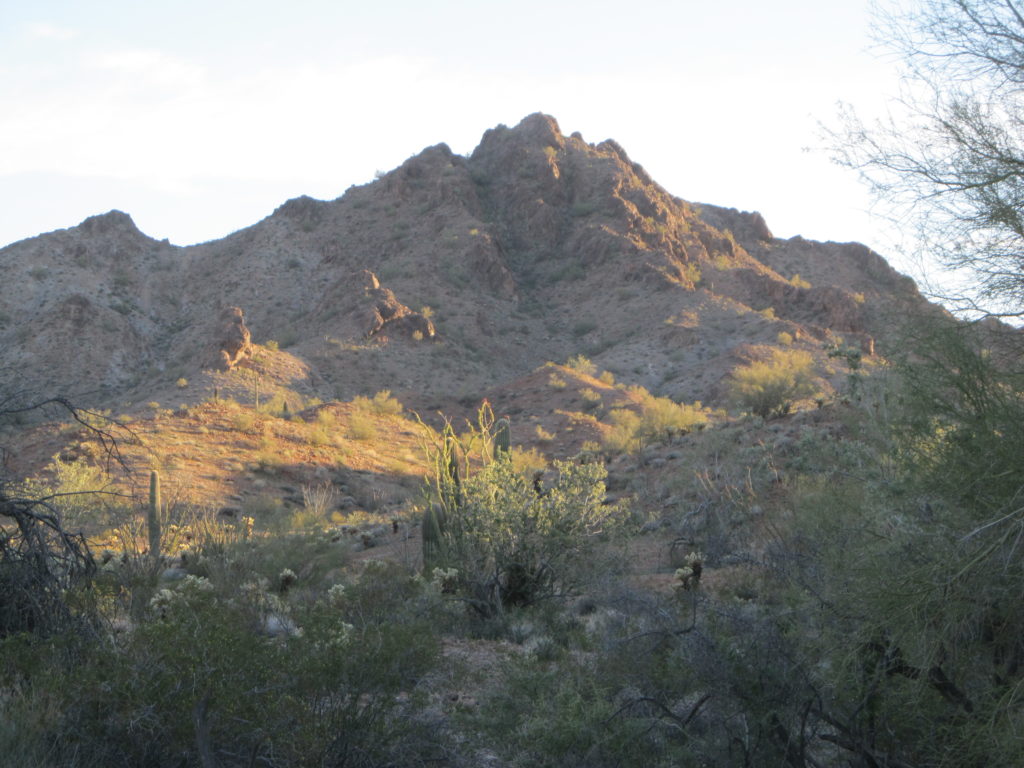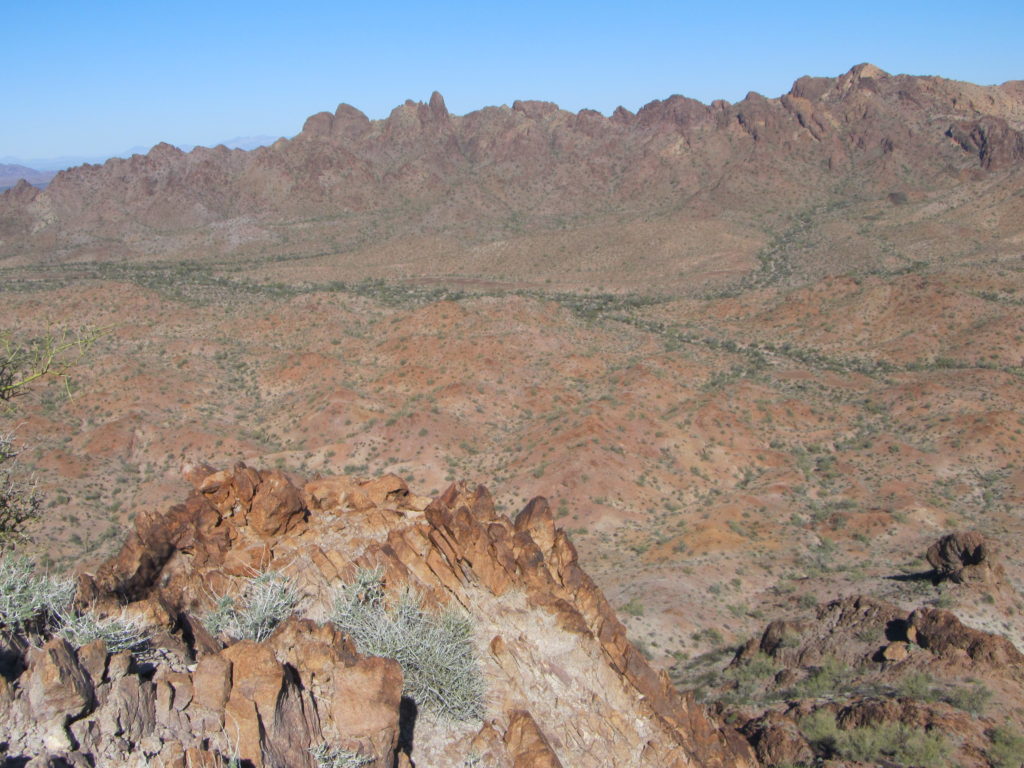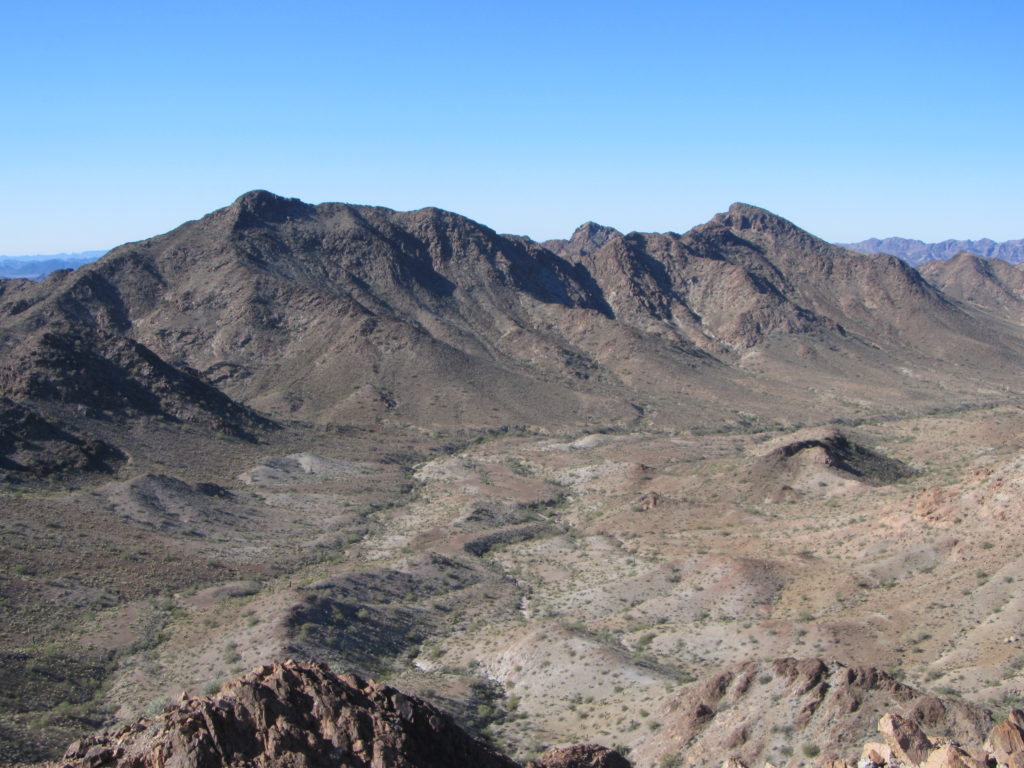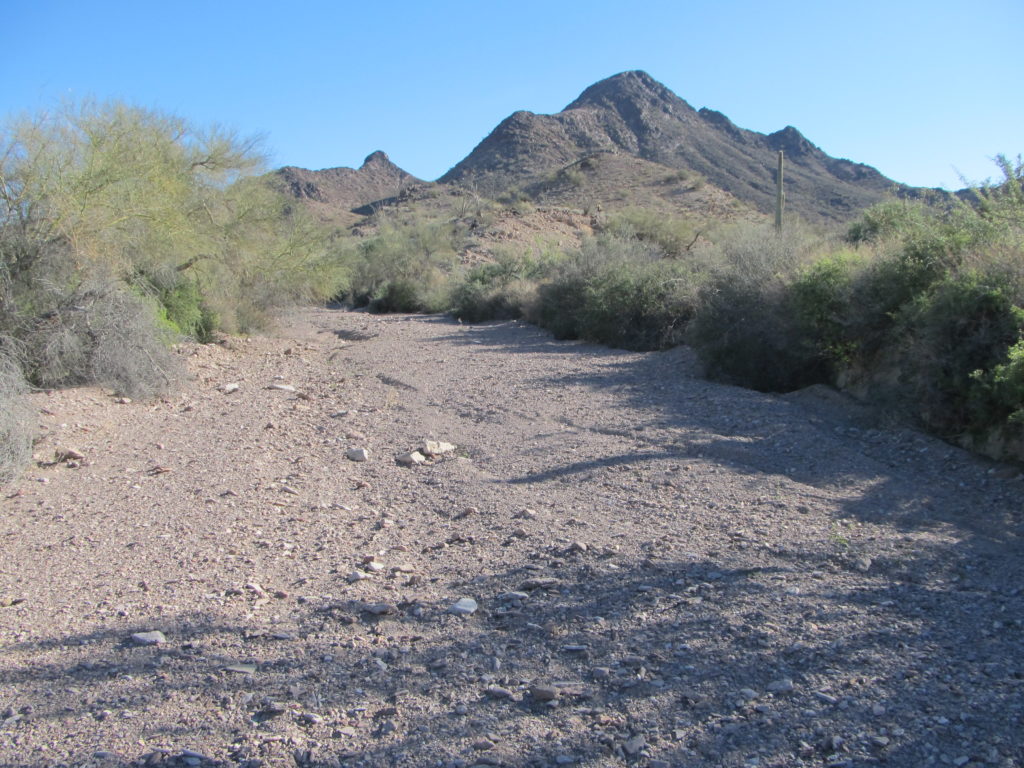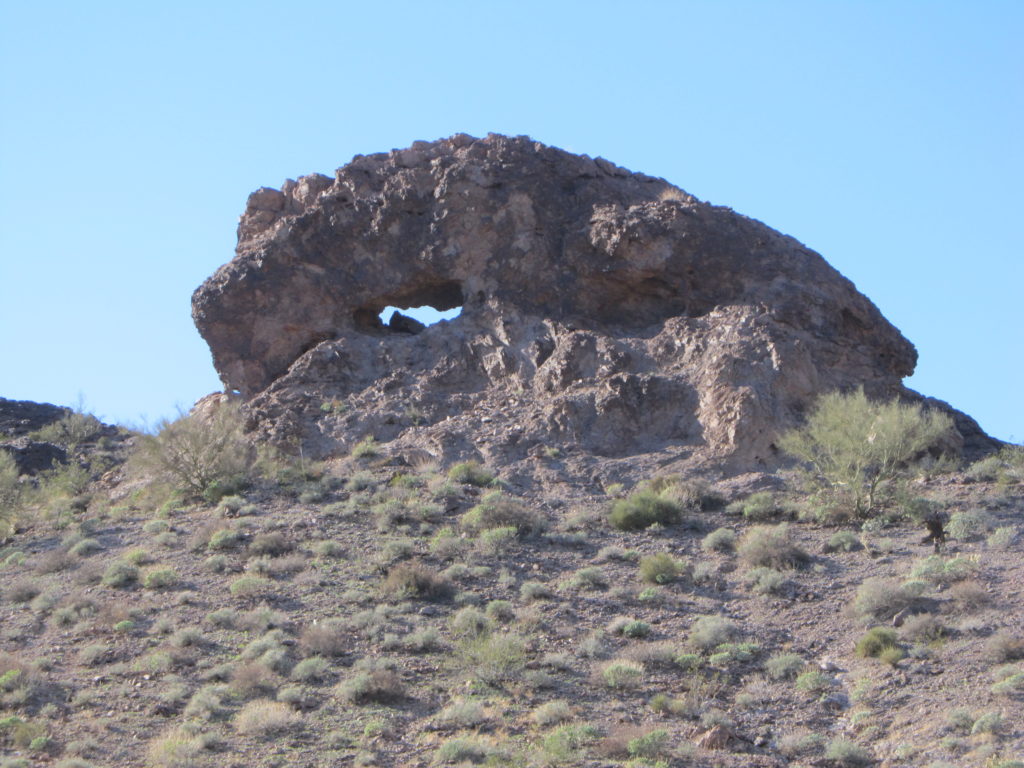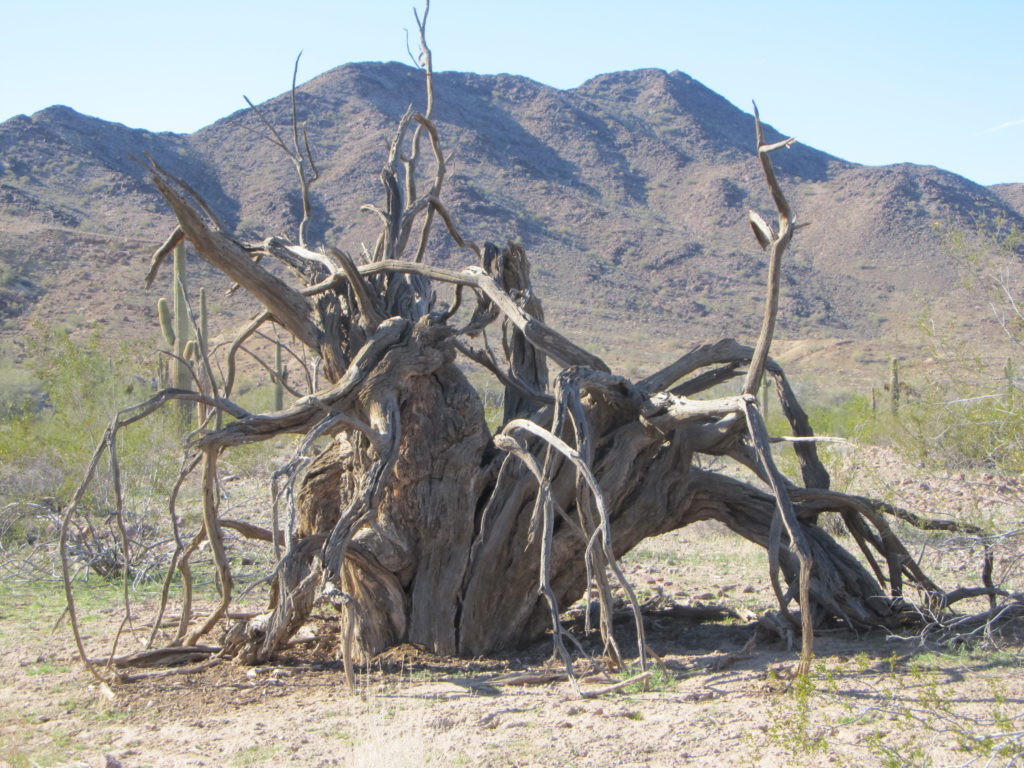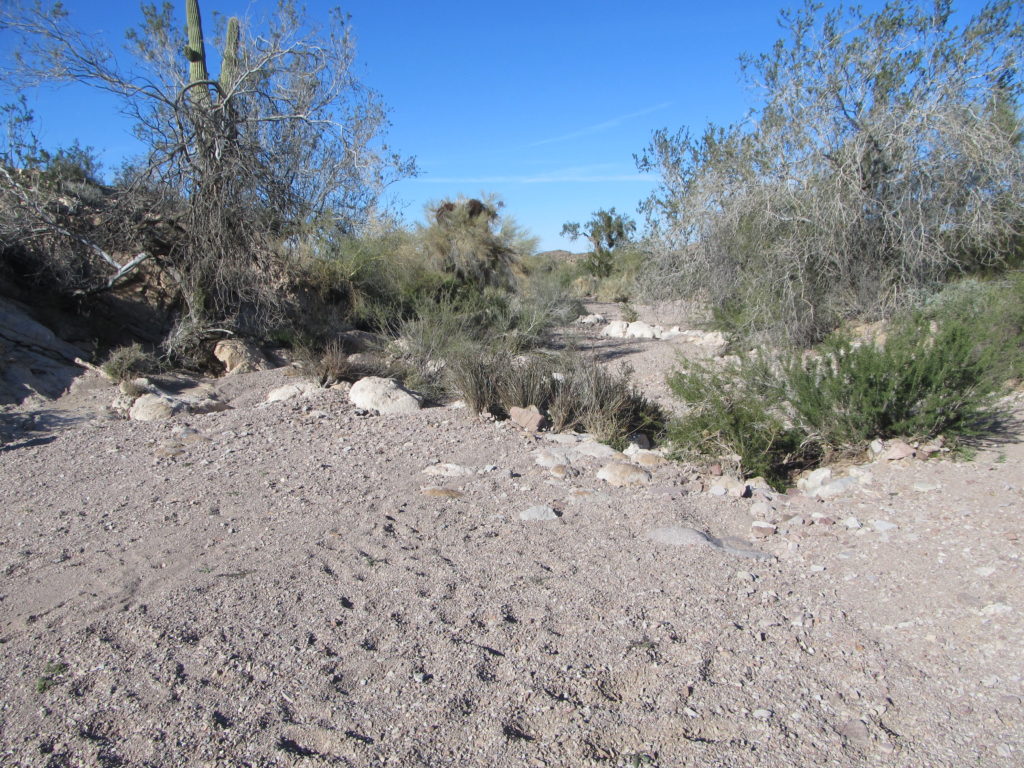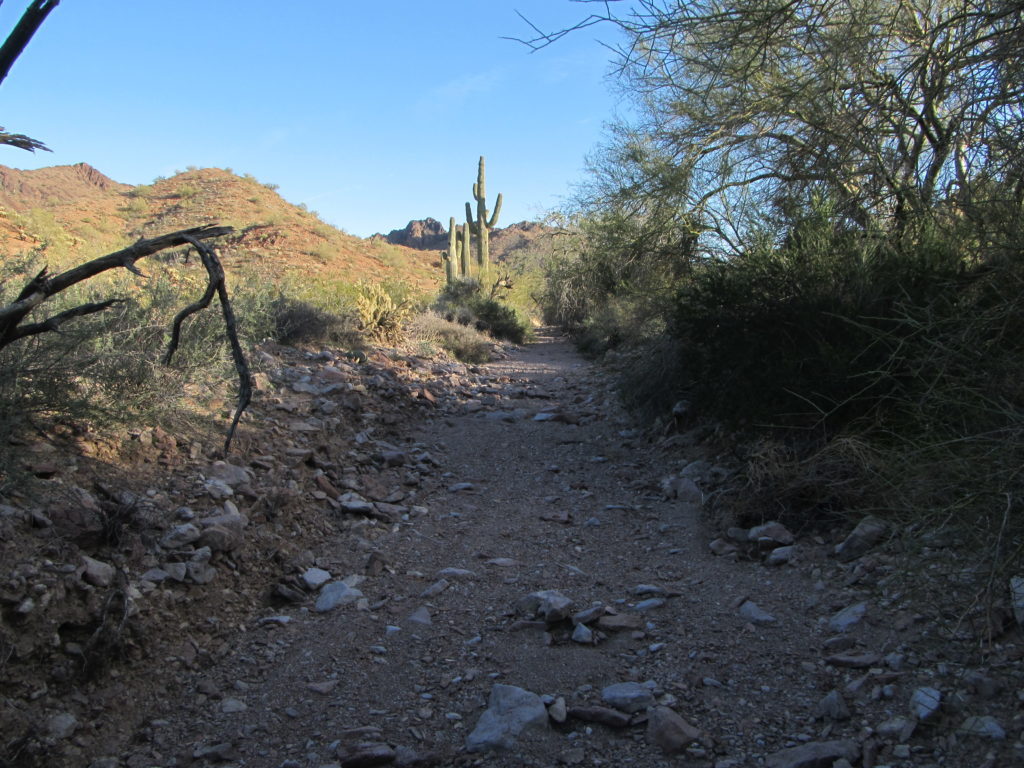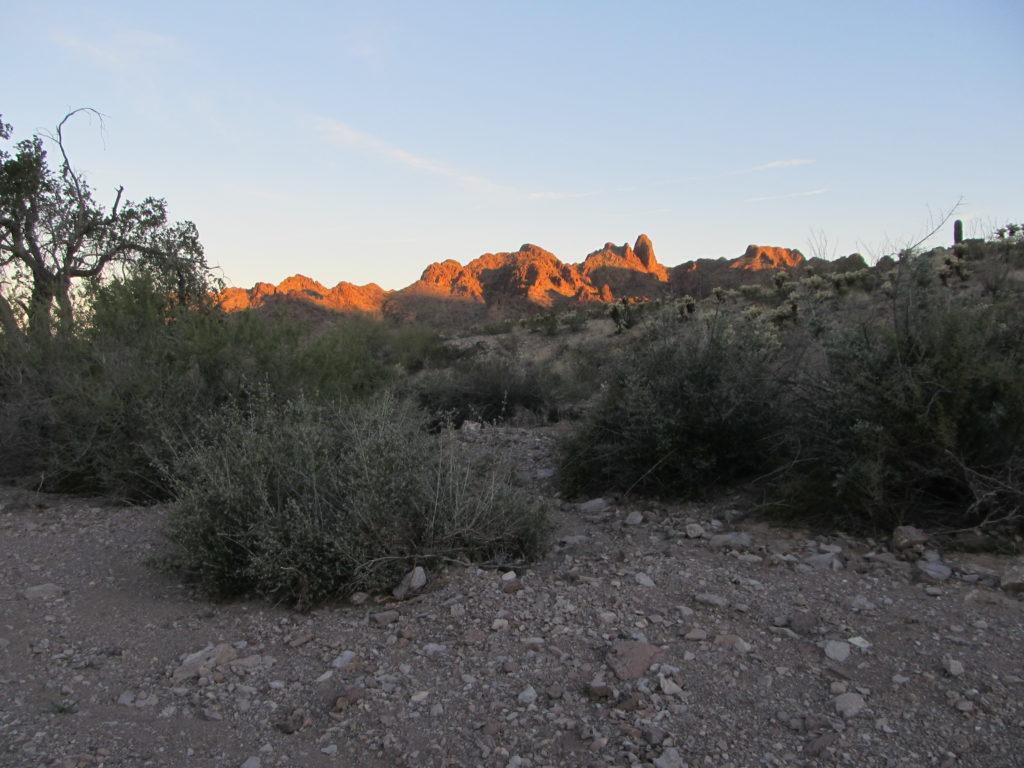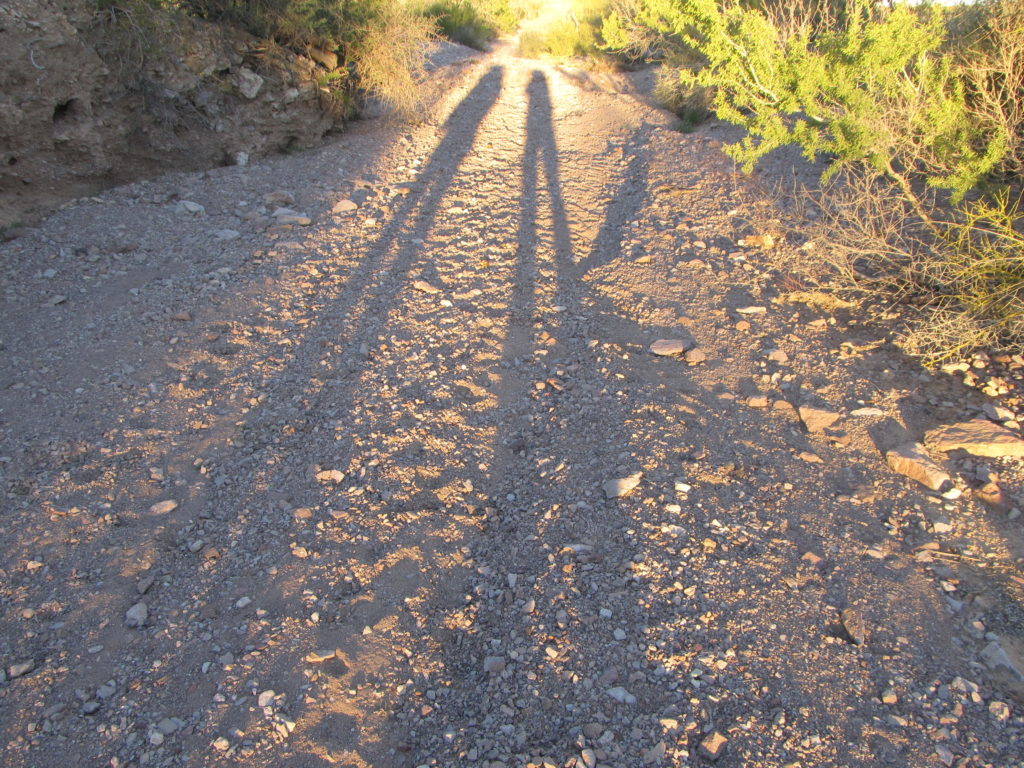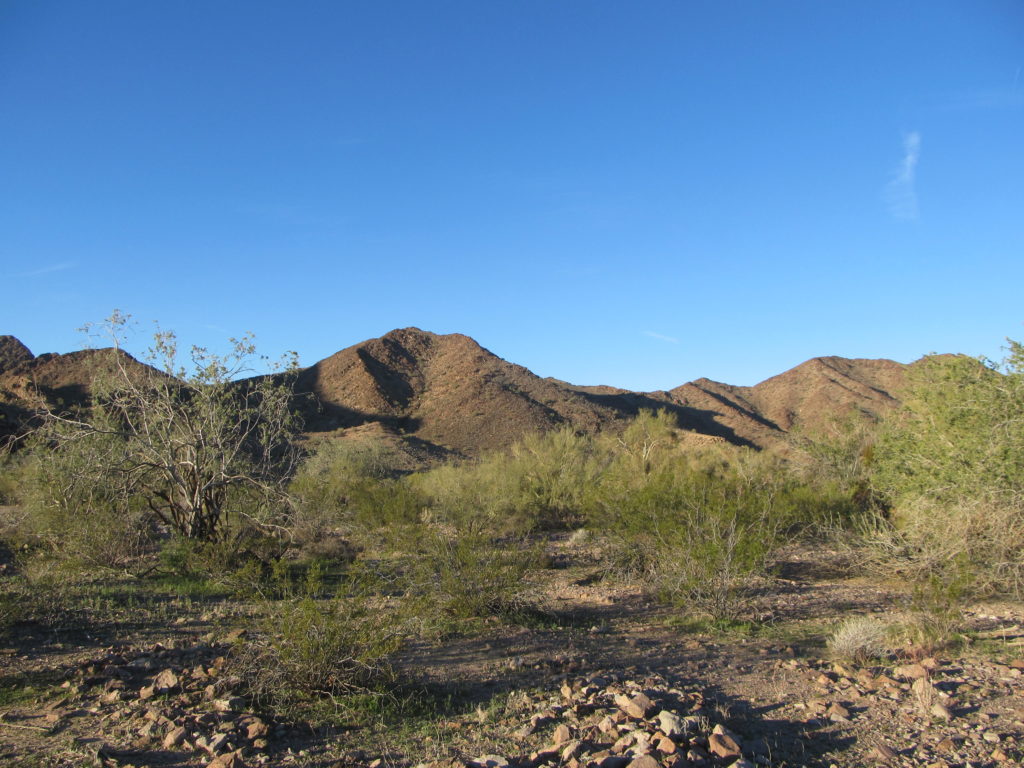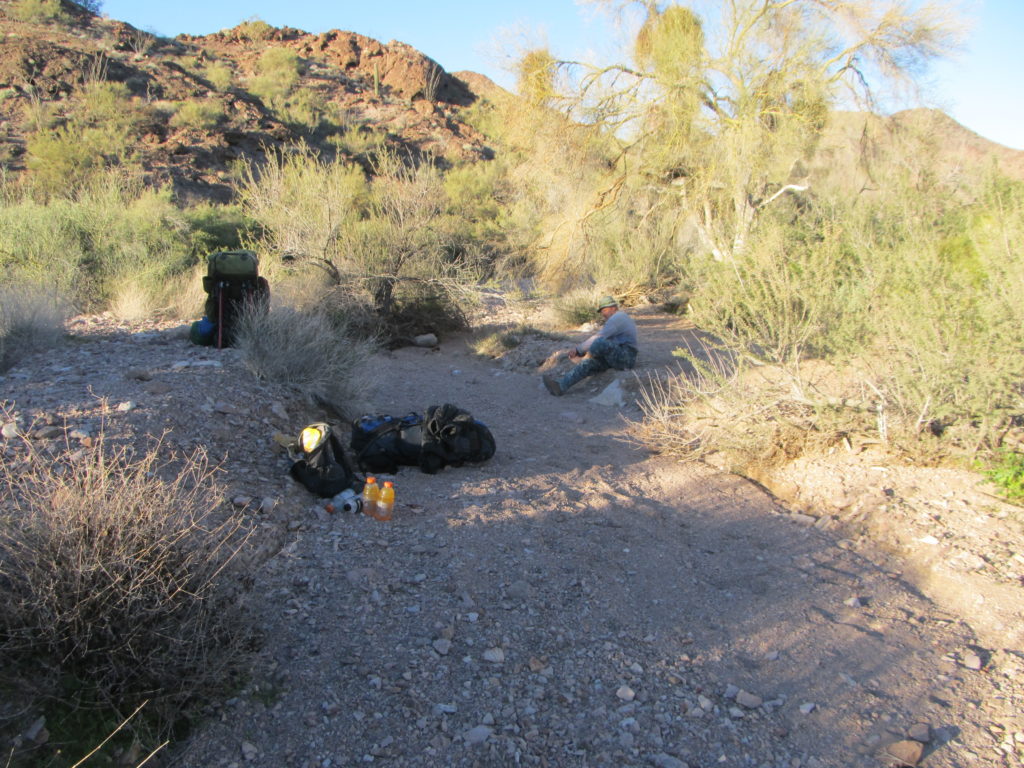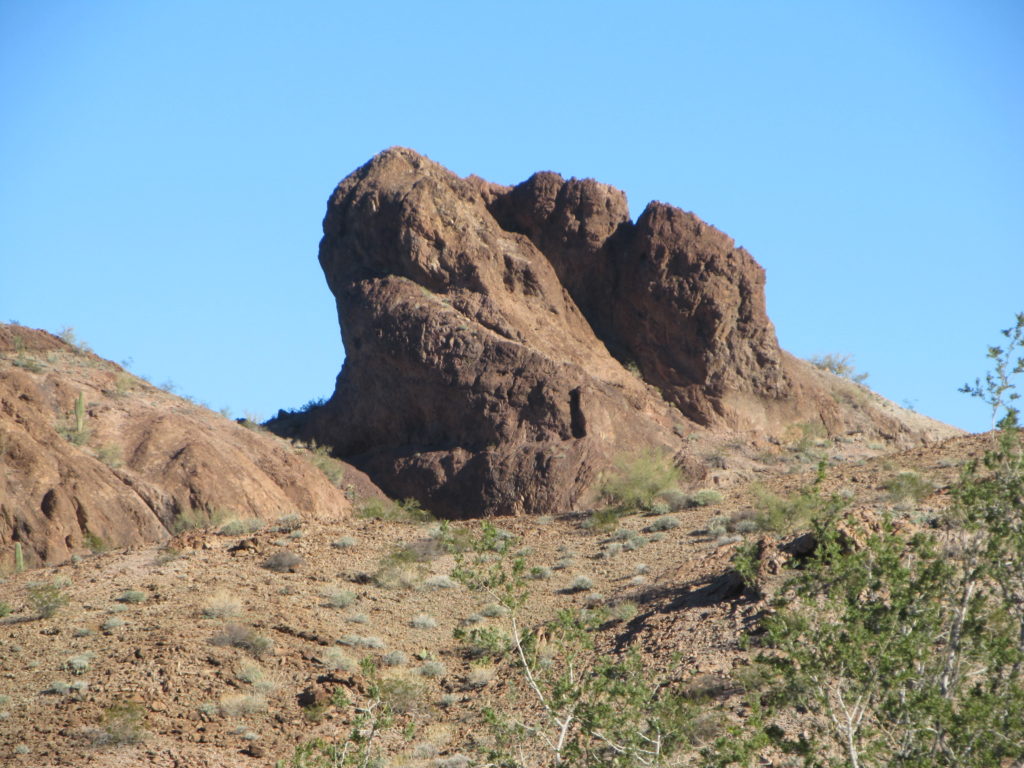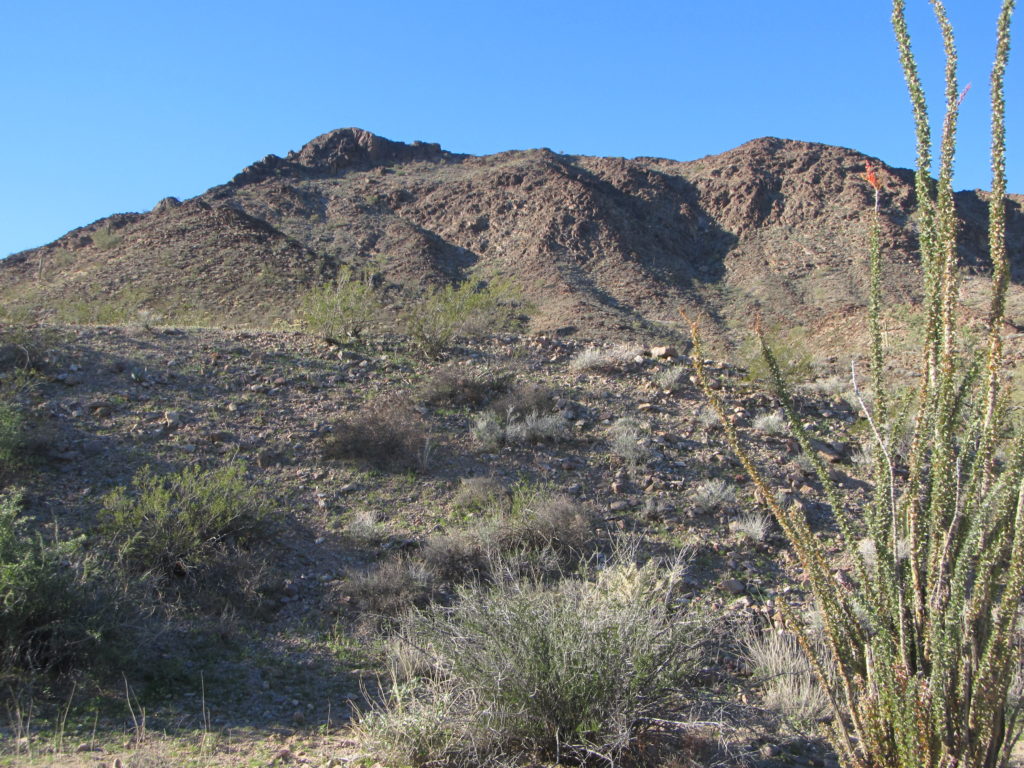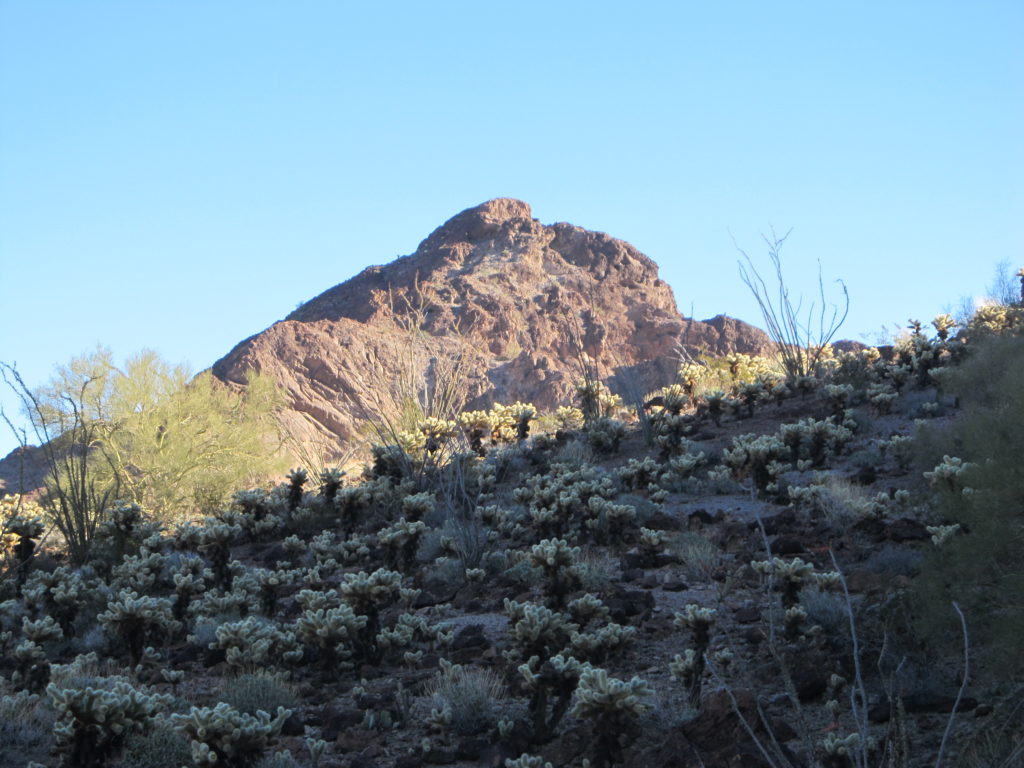Before reading this, please be sure to read the previous 2 installments of “The Heart of Darkness” on this site.
Day 4
The day had finally arrived. We packed up all of our gear, loaded it into our big packs, hid a few things for our return many days in the future, and set out. Our packs were brutally heavy – because we were carrying a bit of a reserve, we still had gear, food, fuel etc, for 10 days of wilderness living and climbing. This would now be the third time we would travel this path, and we bid farewell to Camp One. After a few hours of hard slugging, we arrived at Camp Two. The 4 1/2 gallons of water we’d each left hidden there were still untouched, as expected. What a relief to off-load those huge packs!
When we’d leave any of our camps for the day, it was our routine to gather up our gear and cover it with a tarp or groundsheet. Even though we hadn’t seen a single trace of any other human on this trip, we tried to exercise reasonable caution with our camps. Covering our gear was all good and well, but even then we had to keep in mind that aircraft over-flying any of our camps would be able to spot anything out-of-place. Helicopters would be flying lower than jet aircraft and could more easily spot our gear. Bottom line – it would be prudent to disguise the tarps as well, by putting them under vegetation such as overhanging tree branches, or by gathering brush and laying it on the tarps to hide it from prying eyes. At Camp Two, we hid all of our water really well. The chance of anyone walking through our camp was virtually zero, but in the off-chance they did, they wouldn’t find our water. This was crucial – our water had to be exactly where we wanted it to be, at all times, reliably and under our control.
Realistically, there was only one more peak that could be climbed from Camp Two. You might be asking why we’d put in all this effort to move water, then gear, in separate carries to a spot from which we’d only climb 2 peaks (one yesterday, one today). It seemed the most logical plan to us – it would avoid the much longer carry of Camp One all the way to Camp Three, breaking it into 2 parts – less wear and tear on our bodies. Having to carry so much water is what made this trip difficult. We organized our gear and prepared day packs, then set out for the nearby mountain, not far to the south. I picked a route that was not ideal, causing us to go over a couple of un-necessary bumps, but once we got it figured out thanks to Luke’s route-finding, we made good time to the top of our peak. The wind was howling as we hung on for dear life and prepared a register. Here’s a telephoto shot of the peak taken late in the day.
From the summit, we could look down to our camp. You can see the the tumbled reddish-brown hills in the middle of the photo, a sort of badlands between the peak and our camp. See the dark green line running from one side to the other? – that’s a wash, and our Camp Two was along it, close to the middle of the photo.
There were other tantalizing views from the summit, this one showing some of the peaks we planned to climb in coming days.
It didn’t take long to return to camp, and even before we got there we’d made another important decision – we would use the afternoon to move our water to our next camp, Camp Three. Planning ahead for any possible emergency, though, we each left about 3 quarts at Camp Two. Once we’d loaded up the rest, we walked out with 38 pounds on our backs. In spite of the weight, it was an enjoyable walk in the afternoon sunshine. For much of the distance, the wash was wide and sandy, easy to travel.
There was plenty of interesting scenery along the way.
We weren’t using as much water each day as we thought we would. Normally, even in winter, we planned on 4 quarts to drink each day and another quart for cooking. Our usage was a full quart below that so far, and we factored that into our long-term plans.
When it came to food, here’s what we were eating: instant oatmeal for breakfast (plus instant coffee for Luke); during the day, we’d snack on things like dried fruit, hulled sunflower seeds, trail mix, granola bars – things that had a lot of calories. It was hard to eat all of our daily allowance and we’d often have some left over. We could snack on it in the evening, but from my side I soon realized that I had more than I’d need and I left some of it at Camp One
By mid-afternoon, we were there – Camp Three. This would be our farthest camp, the deepest we would penetrate into the Heart of Darkness. We were so far into forbidden military land that it almost made us giddy. From here, we were perfectly positioned for all the rest of our peaks, but here’s the best part – it turned out to be a beautiful spot! Easily the best of our three camps. Wide stretches of sand on which to sleep; nice rocks from which to get into and out of our packs; secluded as all get-out. It ticked all the boxes, and happened to be a real stunner. We were excited to have found it, and couldn’t wait to spend many nights here. Just look at this spot – for us, it was like winning the lottery.
Once we had unloaded our water, we reluctantly said goodbye to this special spot and started back the way we’d come. Although the walking was easy, I noticed that the soles of my feet had become painful and felt like they were on fire. This was really concerning – how would it affect my ability to climb all of the remaining peaks? All I could conclude was that the 2 major carries of heavy weight today had taken their toll. Eventually, I limped into Camp Two – what a relief to take off those mountaineering boots! One luxury I had allowed myself on this trip was a pair of lightweight sneakers – I knew they’d provide welcome relief from the big boots and I never regretted having brought them.
Camp Two was not my favorite place. Although it met our needs, I never did like it from the start. Yes, it was sunny at the beginning of each day, but way too early in the afternoon the sun set behind a nearby hill and plunged it into a gloomy shade.
We set about our normal camp chores: picking and preparing the exact spot we’d set our sleeping bags; organizing our gear; cooking a hot supper; gathering dead wood and preparing to burn our trash in a campfire; writing my diary; planning our gear for tomorrow and getting it ready; taping any hot spots on our feet and tending to any first-aid needs. And last but far from least, planning our climbing agenda for the next day.
This would be the only night we’d actually sleep at Camp Two. Once darkness fell and we were using headlamps, we discovered something else we didn’t like about the place. Teddy-Bear Cholla is the nastiest type of cactus that grows in the Sonoran Desert, and our camp was littered with their spines. They stuck to everything, and we spent painful moments using tweezers to pull them out of our skin.
Typically, after an hour or two around the fire, we’d crawl into our sleeping bags between 8 and 9 o’clock and sleep until around 6:00 AM. Getting up to pee in the cold night air was unpleasant, and it would take a while to get warm again. The only downside of sleeping in the open air without a tent was a bit of overnight dew, which would soon dry in the daytime air. The long-range weather forecast had promised no rain at all, and so far we’d had nothing but clear blue skies.
Day 5
Came the morning, and we packed up everything. We now had 8 peaks under our belts, and looked forward to at least 9 more. We had plenty of food and fuel, enough registers for all the peaks, and our water situation was under control. By the time everything was loaded in our packs and we set out, it was just after 7:30 AM. My feet weren’t bothering me this morning, so that was a plus.
We moved down the wash at a leisurely pace. Today all our gear and supplies would be safely ensconced at our lovely Camp Three, and we were really looking forward to it. It was in good spirits that we moved along, chatting about the day’s climbs to come. Peaks in the distance stood out in the early morning light, catching the first rays of sun.
As we walked, the sun rose high enough to finally reach us.
Here’s a view of one of the unclimbed peaks we hoped to tackle as soon as tomorrow.
It was around nine in the morning by the time we dropped our loads about a quarter-mile shy of Camp Three. Our plan was to go up a different valley which would give us access to our two peaks of the day, then come back to the loads and continue the carry that last bit to finally move completely in to Camp Three. Here’s where we dropped the gear and prepared for the day’s climbing.
With light day packs and in good spirits, we set out up the side valley on this perfect morning. At first, we tried traveling the ground above the wash but soon quit fooling around and settled down into the bottom of the wash itself. It was easy going, no issues with brush, and we made good time. Along the way, we were entertained by great scenery.
This wash twisted and turned like a set of intestines, but it was fun to follow. Looming up above a nearby ridge was the second peak we planned to climb today.
And in the other direction stood the last peak we’d climbed yesterday morning.
As we neared the head of our wash, the peak we’d come to climb loomed above us. It looked worse than what we’d imagined we’d find from afar. We gained a rocky rib and had an unbroken view of its northwest side – yikes! Row upon row of cliffs barred our way, and there was nothing friendly about any of it. “That’s okay, we’ve nothing but time” was our mantra – in fact, we were convinced that we’d knock off today’s 2 peaks and be lazing in Camp Three by mid-afternoon. Back down we went, then over a couple of low ridges and into a bowl that was more towards the northeast side of the mountain. It was a gloomy place, deep in shadow, and it steepened considerably as we approached its head. The closer we got, we began to see 2 possible routes up through the cliffs that blocked our way. The one to the left, we soon dismissed in favor of an easier-looking one on the right. Up we climbed through scattered brush to a narrowing gully which still looked good as we got in close. Hey, this was turning out better than it first looked, and it seemed our way to the upper, easier reaches of the peak was now assured. How little did I know that my life was about to change. Do you remember the opening lines of Part One of this story? If you don’t, here’s a reminder:
I’m paying the price for my sins. For a week now, I’ve been changing dressings, using ice packs, applying bandages. – it’s like I’m in a bad dream that won’t end. All of this misery is of my own making, though. As I write this, it is exactly one week to the minute since the accident occurred. I am re-living the traumatic event every day. I’m going to tell you about it, but first you need to know the events that led up to it.
All 3 of the parts of the story you’ve already read have been leading up to this moment. Stay tuned for the final installment of this story – you’ve now reached the point where the accident occurred.

